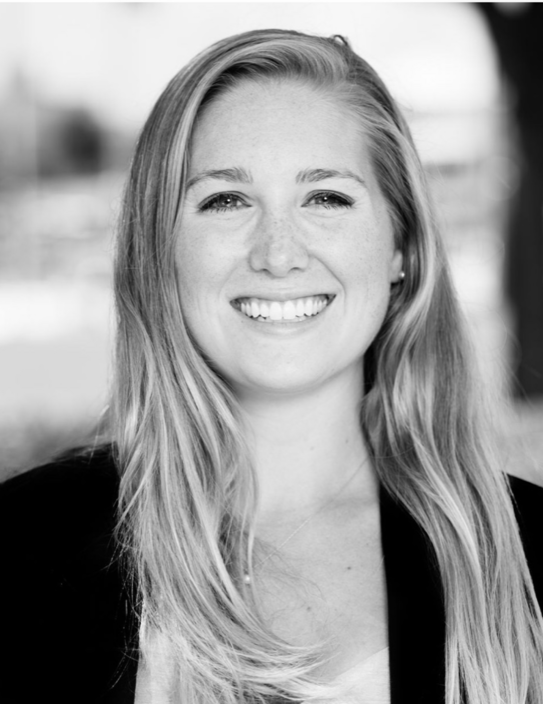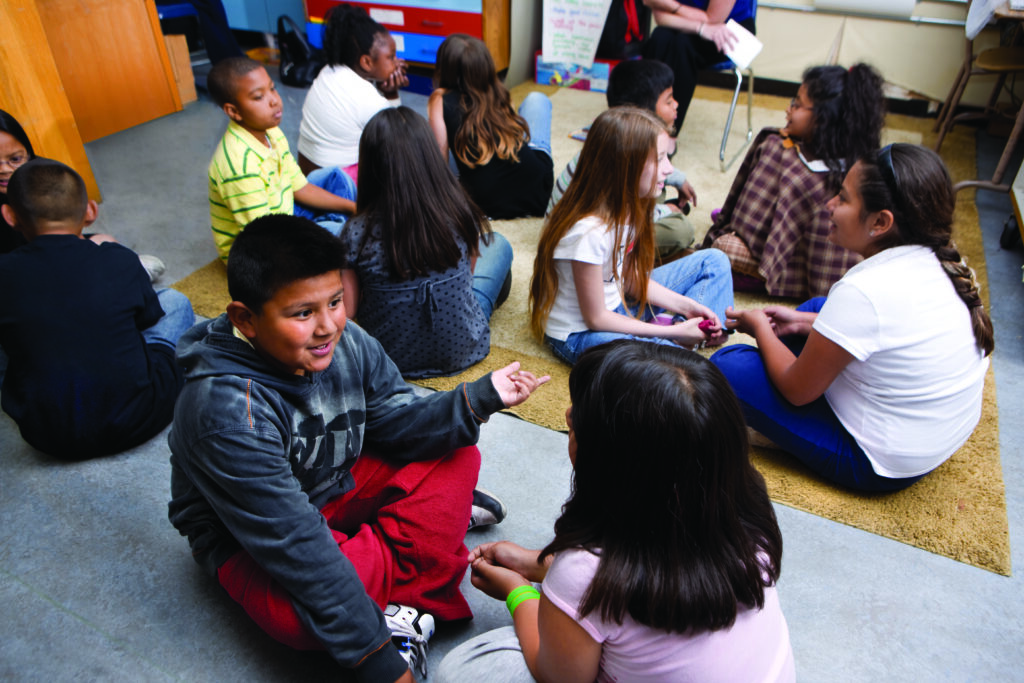
In this interview, Vice Principal Stephanie Bailey of Kailua Elementary in Hawaii shares why the school adopted Caring School Community and how the program has fostered a robust learning community and grown students’ sense of belonging.
Tell us a little about yourself, your school, and the students that you serve.
My name is Stephanie Bailey, and I’m the vice principal at Kailua Elementary School, in Kailua, HI on the island of Oahu. Prior to being VP I was a special education teacher for four years and a fourth-grade general education teacher for three years.
I moved to Hawaii in January 2021, and I absolutely love the island and my school. Our school’s biggest strength is its diversity. We are so fortunate to have a school community that is made up of 17 different cultures. It has 13 different languages besides English spoken at home. This is what makes our school, as my principal says, “Beautifully diverse!”
Every day our students and staff learn something new from and about each other.
A bit more about our school:
- We are a Title 1 school
- 7 percent of our students are impacted by the military,
- 15 percent of students receive special education services, and
- 9 percent are multilingual learners
Throughout the week, students engage in reading, writing, math, science, social studies, Hawaiian studies (‘Aina), and specials (library, PE, and art).
They also have the opportunity to engage in different clubs/activities. Blue blue crew is a group of third through fifth graders working as stewards of our campus environment. Other options include junior coaches, yearbook, student government, military strong club, and more.
What is the most rewarding part of being an educator for you?
I love my job! I believe that no matter what obstacles a student has, when provided the right tools and high-quality instruction, they can and will attain learning and growth.
Students, families, and staff deserve an advocate who:
- listens and learns;
- sets and focuses on long-term goals;
- values support from others;
- is persistent, empowering, and a clear communicator;
- and is passionate about their role.
For me, the most rewarding part of being an educator is making a difference in my students’ and families’ lives.
I have been a listening ear and key resource for the mom who is trying to navigate and understand her child’s behaviors.
I have helped to spark the light bulb in a student’s learning.
I believe that no matter what obstacles a student has, when provided the right tools and high-quality instruction, they can and will attain learning and growth.
I have seen their face exude happiness when they have understood the problem.
I have also fought for additional support for teachers and students. And have seen the impact that has had on classroom culture and wellbeing.
These are just a few of the “aha!” moments that I have had as an educator that left me confident in my ability to positively make a difference. They are why I do what I do every single day.
How did your school become interested in the Caring School Community program? Briefly share the process.
Back during the 2019–2020 school year, our school community identified a need for an SEL (Social and Emotional Learning) curriculum to be implemented starting in the 2020–2021 school year.
At that time we didn’t have an SEL curriculum that teachers felt was easy to use within their classrooms, but we had district health requirements and students/classes that demonstrated a need for emotional well-being lessons.
The process began by teachers and the school psychologist receiving a list of potential options from the state. The team then conducted a thorough review of the potential options, narrowing down their top contenders.
Once these were identified, small groups of individuals implemented parts of the curricula and came back with insights.
After aligning their experiences and the gathered information to the school’s vision, mission and desired goals, the team determined that the Caring School Community curriculum was the best fit for all stakeholders.
One aspect of the Caring School Community curriculum that really drew staff in was the ease of implementation. It was clear to teachers what needed to be done. It was something they could easily incorporate into their schedules without feeling overwhelmed.
It was something they could easily incorporate into their schedules without feeling overwhelmed.
How long has your school been implementing Caring School Community? Tell us a little about the implementation.
During the 2019–2020 school year, we selected Caring School Community with the intent to implement it during the 2020–2021 school year—which as we all know was the start of the COVID pandemic. However, that didn’t stop us!
While the roll-out wasn’t at all what we expected it to be, the curriculum still provided our school community with a number of resources that could be used virtually.
Therefore, to kick off our implementation, all teachers co-created virtual norms with their students. They participated in virtual morning meetings to develop relationships among students and a sense of belonging.
Once Hawaii fully transitioned back into the school setting, we were able to slowly add more aspects of the Caring School Community framework. For example, we incorporated closing meetings and the discipline guide, then mediations, class meetings, etc., until we were in full swing with the framework for the 2022–2023 school year.
The biggest impact of beginning the Caring School Community curriculum virtually was that teachers were able to set the foundations for classroom structure and build students’ sense of belonging for when they began transitioning back to a classroom setting.
When students entered their new rooms for the first time at the end of the school year, they already felt as if they had connections with their other classmates and the teacher. They knew the classroom norms.
The teachers continued the Caring School Community implementation, providing students with a familiar structure during a very uncertain time.
As a school leader, what do you appreciate about Caring School Community? What do teachers appreciate about it?
The aspects that I appreciate the most are the community building and reflective process that is fostered throughout Caring School Community.
I have created meaningful relationships with my students. They feel heard and supported and are given a sense of belonging.
I have engaged in reflective practices pertaining to behavior and the understanding of self and of others that have strengthened students’ social-emotional development.
My staff deeply appreciates the space that Caring School Community creates for building meaningful relationships between students and teachers, and among the students themselves.
My staff deeply appreciates the space that Caring School Community creates for building meaningful relationships between students and teachers, and among the students themselves.
Students light up when they find commonalities with peers they might not have initially gravitated towards. This has helped to build strong classroom communities and cultivate friendships.

What have you noticed about students’ behavior, social skills, engagement, and sense of belonging? What have teachers noticed?
After speaking with teachers, staff and substitutes, I realized we have all noticed a positive difference since implementing Caring School Community.
The activities that are embedded within the curriculum have helped students who used to be more shy or quiet find their voice within the classroom and around the school.
Students are taking more ownership of their actions. Students have been more inclusive during classroom projects and games. Home connection activities have been meaningful for the families who participate.
Substitutes also follow the Caring School Community morning/closing circle activities that the teachers leave for them. They describe the positive impact they have had on their day. The activities have allowed them to develop a relationship with the class. This makes classroom management easier and helps start and end the day on positive notes.
How have you seen Caring School Community support teaching practices and/or the overall culture in your school?
Caring School Community has supported teachers by providing them with useful tools and guides to build strong classroom communities.
Teachers engage in morning circles, weekly classroom meetings, SEL lessons, and closing circles that focus on developing welcoming environments and social competencies, addressing pressing issues within the classroom, and learning/strengthening new skills.
Students and teachers co-create their norms and classroom rules. Since students have had a hand in the development of these rules, they feel they have a voice in the process and ownership of their actions. Teachers don’t feel overwhelmed by the process due to the detailed support and curriculum guide that is provided.
Finally, as I have mentioned before, we have a very diverse school community, and through Caring School Community, all of our students and staff all feel like an integral part of the community and have expressed joy and excitement when learning new things from each other.
…all of our students and staff all feel like an integral part of the community and have expressed joy and excitement when learning new things from each other.
The Caring School Community program includes a Caring School Discipline guide, with editions for both teachers and principals. Tell us a little about your (or your teachers’) experience using the guide with students who need more support.
As I mentioned earlier, I have really appreciated the reflective process that accompanies the Caring Schools Discipline guide.
The goal of the discipline component of Caring School Community is to help students “become caring, responsible members of their school communities.” The guide itself helps to “create warm, safe, and disciplined classroom [and school] environments” where students will learn and develop critical skills.
If I notice that a student is struggling within the classroom or with peers, I use the handbook to guide my conversations. Engaging in reflective questions such as:
- Why is it important that everyone follows the rules?
- If you would like to participate, following the rules is a part of it; can you share with me the rules?
- How do you think your actions affected the students around you?
- Why is it important that you don’t disturb your classmates when they’re trying to learn?
Engaging in questions like those has pushed students to better understand how the action they engaged in affected the people around them and themselves.
This process places the ownership of the behavior back onto the student to then make the appropriate amends.
Additionally, mediations have made a positive impact on our school community. When two students have gotten into an argument or a disagreement of some sort, holding mediations with a caring adult has helped them to clear up misconceptions, apologize for actions, and develop norms/agreements for moving forward.
As a response to this process, I have seen students physically pause and think before engaging in an action. I have seen students feel real remorse for their actions and go above and beyond to apologize/make it right.
I have developed meaningful relationships with students who can come speak with me or another safe adult when tough situations arise. Finally, I have seen students build deeper and more meaningful friendships.
What thoughts or insights would you share with a school or district that is considering Caring School Community?
If you are considering Caring School Community, I would say put your hesitations aside and go for it!
As a school leader, I have seen first-hand the positive impact that this curriculum has in multiple ways: on classroom culture, student/teacher relationships, a sense of belonging within the school, and on student behavior.
Every morning as I walk around the school I love hearing the students laughing, bonding, and sharing fun insights during their morning circles. Caring School Community has truly helped our school and students.
***
Related:
Learn more about Caring School Community.
Read SEL Essentials: Reimagining Our Social and Emotional Learning Priorities.

